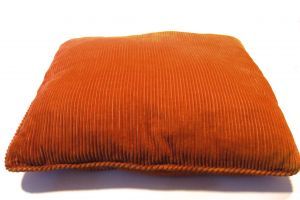Did you know that as much as 50% of your pillow’s weight might be sloughed-off skin, dust mites, or dust mite feces? I didn’t either. But some allergy sufferers are very aware of the extra discomfort involved in pillows, mattresses, comforters and mattress pads that aren’t cleaned regularly.
It is recommended to clean your pillow cases at least every week. If you follow your mom’s advice to change the bed weekly, you won’t have a problem. If your allergies are severe, double-casing your pillows will help, too.
I had never given much thought to cleaning the actual pillows. But cleaning pillows every six months or so not only keeps them clean, and keeps allergies at bay, but the pillows will last longer, according to manufacturers.
Down pillows, mattress toppers, and comforters can be washed in your washing machine. Use liquid detergent rather than soap and allow the water and detergent to mix a bit before adding the pillow or comforter. Down is buoyant and will trap a lot of air, so push the pillows or comforter into the water, squeezing as much air out as possible. When washing down pillows, let them soak, squeezing every so often, for about two hours before starting the wash cycle. Pillows have a hard time getting wet. Toss in a couple of dryer balls or plain old tennis balls when washing. Some people even use a tennis shoe. This will keep the stuffing from bunching up into a corner of comforter or pillow.
You will want to dry your down mattress pad, comforter, or pillow on the “hot” setting on your dryer. With pillows, especially, you may want to stop the dryer periodically to take out and fluff the pillows. You can also hang them out to dry in the hot sun, but you will still want to shake, fluff and change hanging directions occasionally.
If you have latex or memory foam pillows or mattress topper, you need to hand wash these items every 6 months or so. Once again, use liquid detergent instead of soap, as soap is much more difficult to remove. Squeeze the foam pillow or mattress topper until they are full of the sudsy water. Then rinse until clear, being careful not to twist or wring the foam. If you use some vinegar during the rinse process, the detergent will dissolve much faster.
After pressing out as much water as you can without twisting or wringing, you will need to air dry your foam mattress topper and pillows. In drying foam, be careful NOT to dry it in the sun, as sun will cause foam to degrade and discolor. Air dry these items, preferably in the house.
If you have a wool pillow, comforter, duvet, or mattress topper, it is best to have them professionally dry cleaned.
Feather pillows, duvets, and comforters can be hand-washed, using a mild detergent as well, but they are hard to wet. You will need to keep squeezing and soaking to actually clean all the feathers. Rinse until the water is clear, using vinegar if needed to help dissolve the detergent. You can use your dryer for feather pillows on the “hot” setting with the tennis balls, dryer balls, or tennis shoe; or dry outdoors in the hot sun. Once again, fluff and shake the pillows frequently during the drying process.
Even if you don’t suffer from allergies, these tips will help you keep your bed fresh and healthy.



